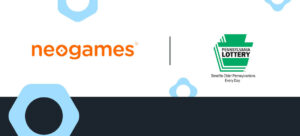In a feature article for La Fleur’s magazine, NeoGames CEO Moti Malul discusses the future of iLottery in the US and how it can remain successful
A decade on from receiving the green light from the US Department of Justice, iLottery in the US has driven transformational changes in the user experience for the better.
The market has grown considerably over the last ten years and in 2023, iLottery turnover is predicted to be between $7 and $8 billion. This is an incredible achievement considering only 11 states are live with iLottery programs. Comparing its performance against retail is impressive, with overall retail sales in the US hitting just over $90 billion per year. The fact that iLottery is already matching around 10% of total retail revenues despite its limited geographical reach demonstrates its strength, with significant potential to grow further should more states embrace the digital environment.
The iLottery program in Michigan for example, has been particularly successful, with over $1 billion given back to the State Education Fund since it was launched in the state eight years ago. In Virginia, online turnover has already exceeded that of retail sales, representing more than half of that state’s lottery turnover, so the opportunities are huge.
Challenges
Retailers have been somewhat reluctant to champion iLottery as a product, believing that their product will be cannibalized, but clearly there is proof that the relationship between online and land-based platforms can be successful. All iLottery states have reported a rise in retail engagement alongside their digital platforms, with an increase of up to 27% in retail sales since the launch of iLottery. In fact, most states are growing at a faster rate than their non-iLottery counterparts.
Understandably, governments are naturally risk-averse and rightly need to act with caution when introducing new types of entertainment under their control. What we have seen is that educating legislators of the benefits and controls, and checks and balances are an integral part of the fact iLottery is player-aware and player-centric, and brings new, positive discussion into the debate of legalizing iLottery.
Another important factor that is often overlooked is the contribution to state revenues from iLottery. The fact is that iLottery generates far bigger revenues in comparison to other iGaming verticals, contributing four times more than sports betting and iGaming taxes on similar GGR levels. This is information that legislators need to know, yet are not hearing enough.
For those markets that have approved iLottery and sports betting or even iGaming, there should not be any rivalry. There is sufficient evidence that all verticals can co-exist, with Michigan and Pennsylvania being prime examples where iLottery works successfully alongside other iGaming verticals.
Taking iLottery to new heights
With audiences engaging with such a wide array of content, the iLottery industry needs to have a well-rounded strategy that provides a comprehensive customer experience.
Firstly, building a strong omnichannel offering is an important step in capitalizing on existing retail operations, which already have a strong audience. Over the last 15 years, NeoGames has used its expertise to help many US and global lottery operators with their digital offerings, providing a suite of leading solutions.
The use of real-time data is imperative to creating a more personalized experience for players and has always been seen as the holy grail by retail lotteries, something that iLottery can deliver. This data can be used to seamlessly segment players and suggest the right content and promotions to those player segments. Portals and apps need to be personalized in their approach to seamlessly suggest relevant experiences.
Real-time marketing will underpin the success of lotteries going forward. We have the players’ attention when they come to visit our platform and we should engage with them immediately. Sending emails shortly after a visit is becoming less effective as a marketing tool. Real-time marketing should offer players content and incentives tailored to their preferences and do so within seconds.
Ultimately, a full omnichannel approach to technology, content, marketing, and operations provides long-term opportunities to harness the power of iLottery across all states, ensuring the continued growth of the digital industry.
This article originally appeared in the Sept/Oct 2023 issue of La Fleur’s magazine. Click here to view the article.
More in Media

When Retail Meets Online | Enhancing the Player Experience Through Omnichannel Delivery
In a feature article in La Fleur’s magazine, Our VP Product, Ohad Shlomoff, explains how a comprehensive approach to omnichannel delivery can help lotteries generate

NeoGames Studio launches its eInstant games with Atlantic Lottery in Canada
LUXEMBOURG, Sept. 28, 2023 (GLOBE NEWSWIRE) — NeoGames S.A. (Nasdaq: NGMS) (“NeoGames” or the “Company”), a technology-driven provider of end-to-end iLottery and iGaming solutions, has

NeoGames signs agreement with Scientific Games to supply its NeoGames Studio content to the Pennsylvania Lottery
LUXEMBOURG, Aug. 15, 2023 (GLOBE NEWSWIRE) — NeoGames S.A. (Nasdaq: NGMS) (“NeoGames” or the “Company”), a technology-driven provider of end-to-end iLottery and iGaming solutions, has
